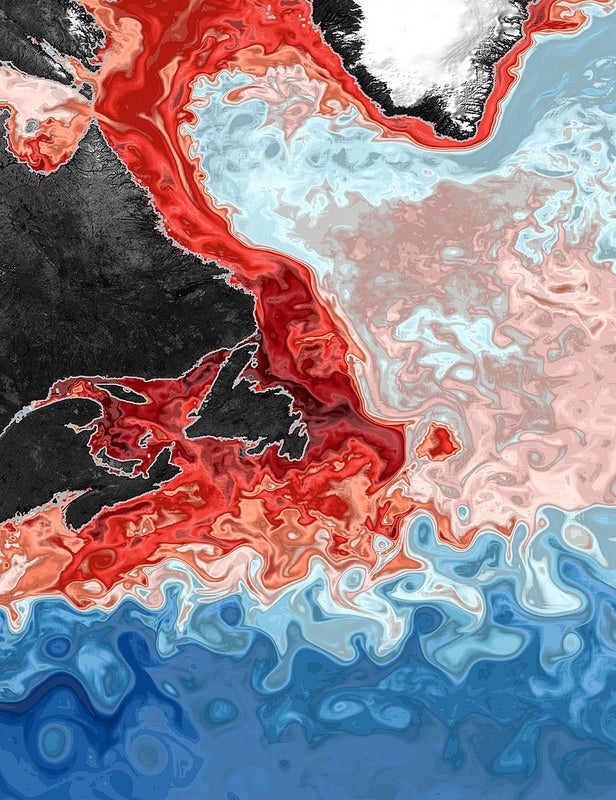The Gulf of St. Lawrence has warmed and lost oxygen faster than almost anywhere else in the global oceans. The broad, biologically rich waterway in Eastern Canada drains North America’s Great Lakes and is popular with fishing boats, whales and tourists.
A new study co-authored by GSO professor Jaime Palter looks at the causes of this rapid deoxygenation and links it to two of the ocean’s most powerful currents: the Gulf Stream and the Labrador Current. The study, published in Nature Climate Change, explains how large-scale climate change already is causing oxygen levels to drop in the deeper parts of this waterway.
“Observations in the very inner Gulf of St. Lawrence show a dramatic oxygen decline, which is reaching hypoxic conditions, meaning it can’t fully support marine life,” said first author Mariona Claret, a research associate at the University of Washington. “The oxygen decline in this region was already reported, but what was not explored before was the underlying cause.”
“The first time my collaborators and I laid eyes on the time series of the dramatic oxygen loss in the Gulf of Saint Lawrence, we immediately suspected that it was an indication of a large-scale shift in ocean circulation, since the waters were simultaneously warming and getting saltier,” said Palter.
The research confirms a recent study showing that, as carbon dioxide levels rose over the past century due to human emissions, the Gulf Stream has shifted northward and the cold, fresh, oxygen-rich Labrador Current has weakened. The new paper finds that this causes more of the Gulf Stream’s warm, salty and oxygen-poor water to enter the St. Lawrence Seaway.
“Sure enough, when Mariona dove into the historical data, she found a clear shift toward more Gulf Stream waters over the last 70 years,” said Palter. “Then, we realized our model was simulating the same northward Gulf Stream shift, but only when exposed to the warming effects of rising atmospheric CO2.”
Analysis shows that half the drop in oxygen observed deep in the St. Lawrence River is just due to the warmer water, which can’t hold as much oxygen. The other half is likely due to other factors, such as biological activity in the two currents and inside the channel.
What will happen next is unknown, Claret said. The oxygen levels in the St. Lawrence will depend on much larger questions, she said, like how much carbon dioxide humans will emit into the atmosphere in the coming decades, and how large-scale ocean currents will respond.

